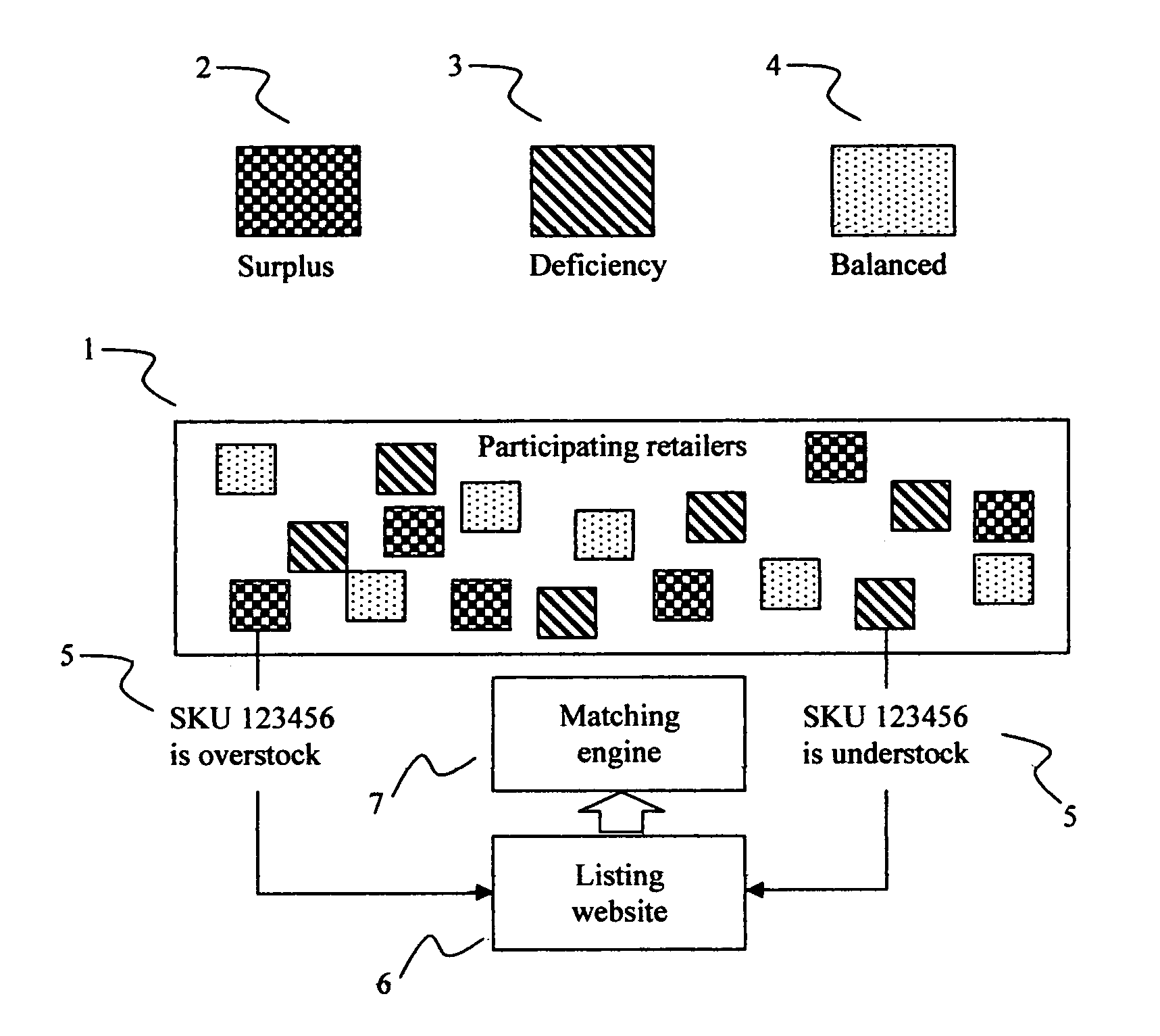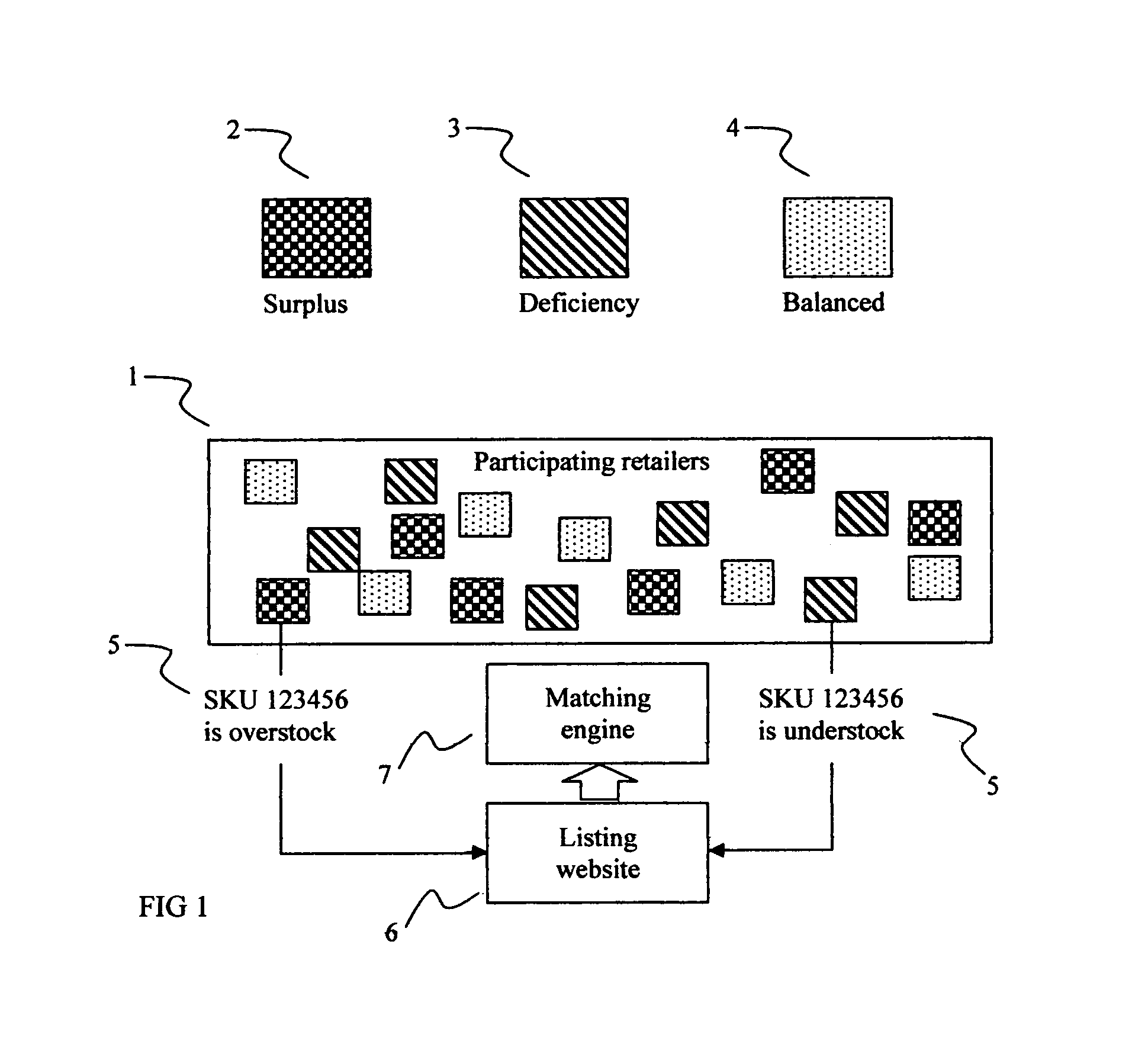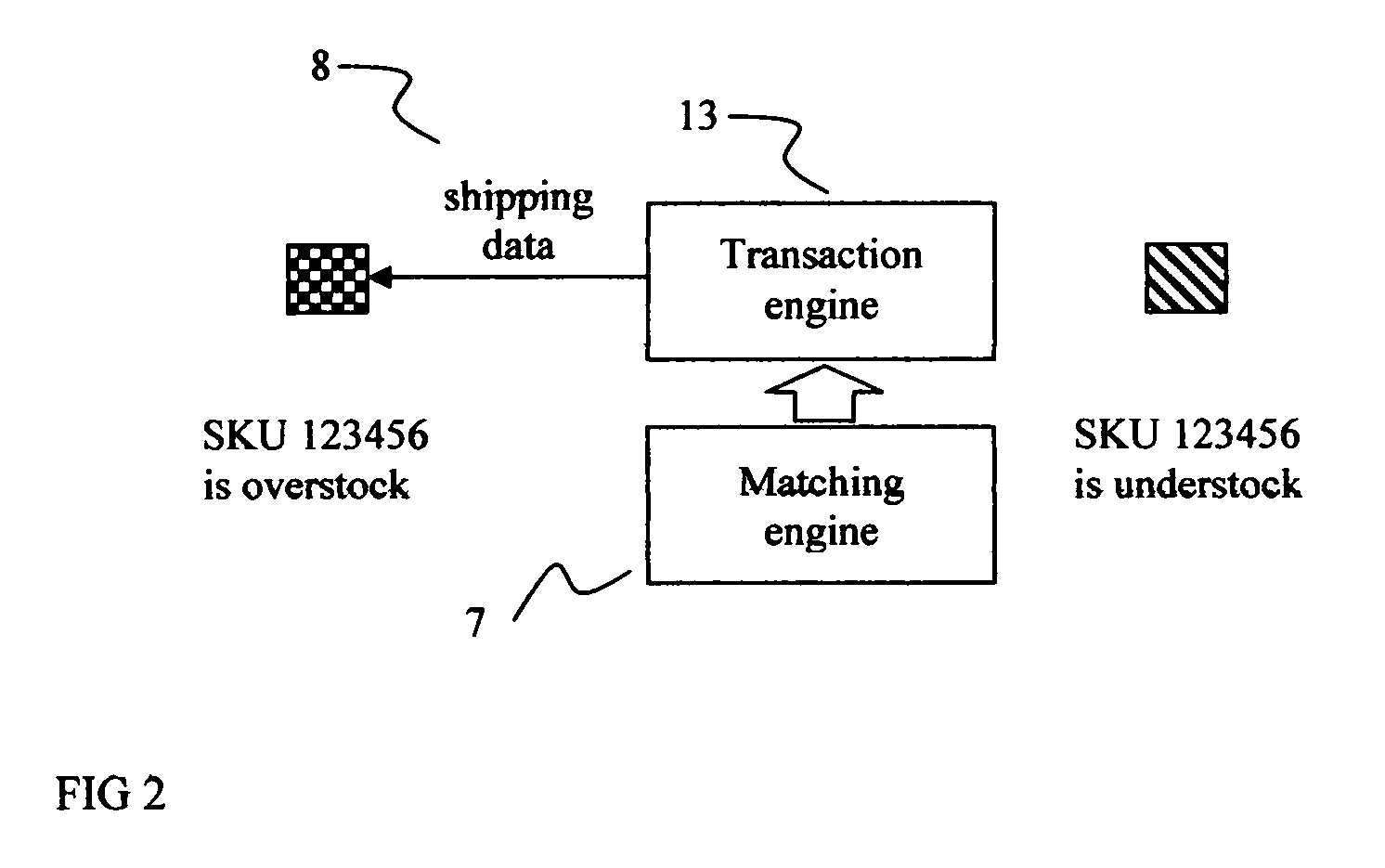However, that application requires that shipper and recipient become known to one another, and that the transaction include payment by the recipient to the shipper, and often that is inconvenient or impossible, particularly when those two nodes are also competitors or members of competing chains.
While this patent is related to selling an inventory and optimizes that process, it does not manage inventory.
But, this does not address the problems of inventory that does not sell at one location, or inadequate inventory to meet demand at another.
However, given the unpredictable nature of the consumer, this invention cannot address inventory problems that arise from an unexpected change in consumer demand, and does not provide a means by which inventory can be equalized between different nodes experiencing congruent problems (matching overstock and understock of the same inventory item).
At any level (manufacturer, distributor / wholesaler, or retailer), inventory excess is expensive, and there have evolved many business methods for dealing with the problem.
There are often agreements between the distribution system and the manufacturer or importer intended to prevent such discounted sales, or transfers to distribution that is not pre-authorized by the manufacturer or importer, and violations of such agreements can cause termination of a sales franchise.
Such returns come at a high price, however.
First, they result in a credit against future orders, which does not help a cash-needy situation.
Third, retaining the right to sell a particular brand often requires maintenance of a certain volume of sales, and returns negatively impact that volume and can jeopardize retention of that sales franchise.
Fourth, vendors / suppliers often control how the retailer can spend credits for returned merchandise.
This is usually a violation of the contract between the authorized dealer and the distributor or manufacturer, and sometimes occurs via nighttime transfers to trucks in alleys, but has the effect of converting excess inventory into ready cash.
The risk is to the franchise held by the authorized dealer, but in the absence of trackable serial numbers that risk is small, and the result is a loss of brand protection.
Excess inventory is expensive, and its value decreases steadily.
That decrease is often more rapid than the rate of sale of the stock, and waning sales revenue often will not replace the cost of buying the inventory in the first place.
At the retail level, and sometimes at the wholesale / distribution level, this solution is often impractical.
When the original imperfection in judgment resulted in one or two items selling out earlier than expected, or the unplanned success of a particular style or color of an item, it may not be cost-effective to place a re-order if there are minimum order quantities, or penalties when orders are below some threshold.
When an item sells out in the two colors of a local university, for example, it may not be cost effective to order twelve gross, ten gross of which will languish along with the original shipment.
In many such cases, the deficiency remains unsatisfied because there is no method by which the order can be cost-effectively filled.
Further, re-order items may not be available at the factory or distributor level because they are back-ordered, closed out, or discontinued, resulting in lower profitability for the retailer whose inventory is comprised of partial size runs or limited color options, etc., making the product difficult to sell.
At the other extreme, a retailer with a franchise to sell protected branded merchandise will load excess merchandise onto a truck at night and ship it to another outlet, unauthorized by the brand manager, and despite any obligation to not do such illicit dealings.
Between these two points exist many different potential solutions, of which none works well enough to satisfy the preponderance of the inventory-balancing problems in the real world marketplace.
One problem with many existing inventory management systems is that they report to management when a given monitored item reaches a re-order level at a given location or storage point, but do not compare levels of different locations or storage points and report comparative levels.
Another problem with existing inventory management systems that monitor inventory levels at multiple sites is that they are not constructed to consider the value of the equalization of inventory between nodes (locations, or storage points, or distribution points).
Another problem is that many such systems do not provide a mechanism to recognize the cost of an overstock at one point, with aging and obsolescing inventory, with a simultaneous understock at a second point, with loss of sales due to nonavailability.
Another problem is that many such systems that do provide a mechanism that recognizes the importance of differential inventory levels, due to geographic preferences or errors made in placing orders, usually stop re-orders of obsolescing inventory and increase orders of understocked inventory, thus correcting the imbalance over time but in the least profitable manner.
Another fundamental problem with all such existing inventory management systems is that they apply exclusively to members of an integrated organization and not to transients or otherwise unaffiliated business units, and therefore the beneficiaries of such systems are only those who are part of that organization.
For example, such a system that addresses the national distribution of product X might have the potential to do so for the organization that “owns and operates” the system, but not for the sole-site business that might benefit from its use, even if that sole-site's participation might assist the organization that operates the system by reducing its logistics costs.
One of the problems with known inventory balancing methods is that they normally affect ordering processes, reducing the input of an item that is stagnating and increasing the input of an item that is selling at unexpectedly high levels.
This creates a substantial lag between the detection of a problem and the beginning of a solution, and the nature of the retail supply chain is such that lag is costly as it represents either stagnating inventory (cash that is not productive) or absent inventory (lost opportunity).
Another problem with known inventory balancing methods is that they are generally single-node, involving one business entity at a time, and can use only the flow rates at that location to correct the problem.
While many of the prior art inventory management and equalization solutions may be suitable to one degree or another for the particular limited requirements they address, they are not optimum or generalized solutions for broad and diverse multi-node retail, wholesale, and distributor markets.
Nor do they meet the needs of transients passing through the system to satisfy inventory imbalance requirements, and are not sufficiently flexible to be adaptable to the needs of many potential users.
 Login to View More
Login to View More  Login to View More
Login to View More 


